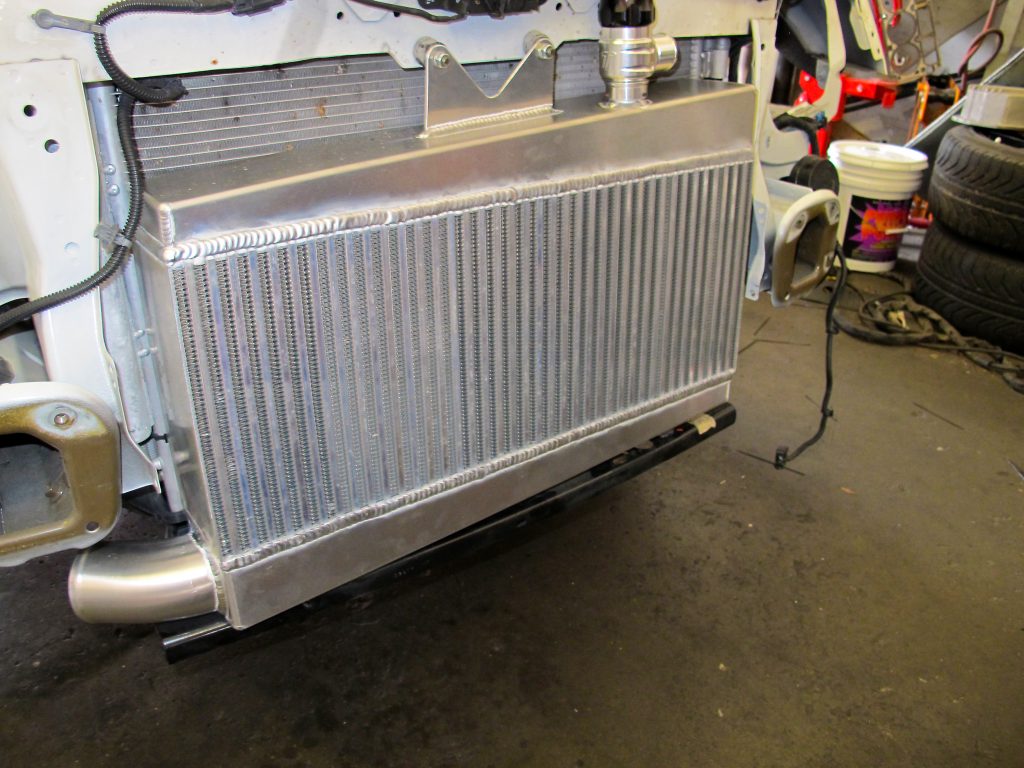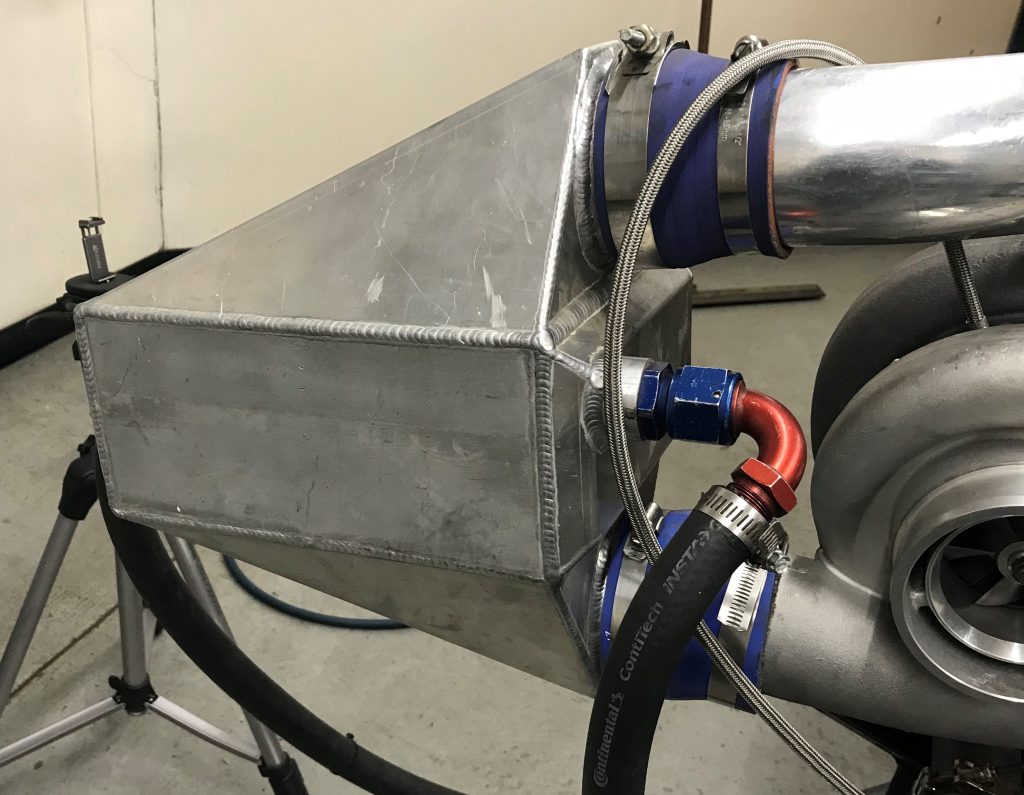Turbochargers are somewhat of a glamour product.
They make big power and, along with superchargers and nitrous, are considered part of the holy triumvirate of automotive power adders. Turbos are not only common aftermarket parts, they’re also trusted pieces in many production engines, including today’s increasingly popular diesel engines.
The intercooler is an essential part of the turbocharger setup.
An intercooler is tasked with cooling the compressed intake charge from the turbocharger before it enters the intake manifold. It acts essentially as a heat exchanger, transferring heat as air passes through its external fins. Consequently, the temperature of the air exiting the intercooler is reduced. The colder (and more importantly, denser) intake charge leads to better combustion, more power, greater efficiency, and less chance of engine-harming detonation.
Detonation occurs when a combustion process spontaneously takes place after the normal combustion caused by the spark plug. It is far more common with high intake temperatures and can cause catastrophic engine failure in some cases. By cooling the intake air with the right intercooler, we can reduce the chances of detonation.
With that said, it’s easy to see why the intercooler is important.
In conjunction with Mishimoto Engineering, we’ve put together a quick guide to intercoolers, so you can choose the right one for your turbo needs. There are basically two types of intercoolers: air-to-air and liquid-to-air.
Air-to-Air Intercoolers
The air-to-air intercooler probably comes to mind most often when talking about intercoolers. This is the intercooler you’ll easily notice at car shows because it is often visible from outside the vehicle. An air-to-air intercooler relies on airflow through its core to cool temperatures. That’s why these intercoolers are mounted just within the front bumper.
In general, air-to-air intercoolers are efficient. However, since this type of intercooler relies on airflow from vehicle speed to create a cooling effect, it can be prone to heat soak at idle when then vehicle isn’t moving. According to Mishimoto, this is rarely an issue with front-mount setups; however, a unit contained deeper within the engine bay can overheat at idle.
Overall, the air-to-air intercooler is the most popular intercooler style and provides the best bang-for-buck.
Liquid-to-Air Intercoolers
The liquid-to-air intercooler is more complex than its air-to-air counterpart.
As the name suggests, the liquid-to-air intercooler uses engine coolant to transfer heat from the air passing through it. In this design, the air and coolant do not make direct contact as they are directed through different passages. The coolant is pumped through the channels and tubes attached to the fins in the heat exchanger. Air flows through the fins, which allows the transfer of heat between the air and coolant.
This design is extremely efficient and is now used on numerous OEM vehicles, including the 6.7L Powerstroke and BMW S55B30. Because of its high efficiency, you’ll most likely find liquid-to-air intercoolers in very high-powered vehicles that make a lot of heat. The downside to this design is the complexity of the setup. It requires coolant lines and fittings, a coolant pump, and sometimes even an additional radiator.
Which Should You Choose?
For most vehicles, an air-to-air intercooler is efficient enough for street and track use. Mishimoto offers these guidelines for choosing between the two styles:
In part 2 of our Intercooler Guide series, we’ll look at the different types of intercooler construction, including core design and end tanks.




Your article was informitive. I’ve seen dyno runs that show significantly higher torque and controlled intake temperatures, but I know it’s under optimal conditions. In a street car, that idles alot, which system would be better able to control knock with 16 lbs of boost? I don’t have access to E85 here in Canada and 91 octane is the highest available with very few exceptions. Should I use water/meth injection, pure methanol or run a separate small fuel cell with MaxNOS or similar for the occasional need to go full boost? Thanks for you article and hope you have time to respond to my inquiry. I’ve searched for a long time now without success. Christian Ginella cginella25@gmail.com
[…] Plus, we didn’t talk about intercoolers here, but an intercooler can be a vital part of a supercharged or turbocharged system. An intercooler cools-down the compressed intake air to improve performance, but demands more space for the intercooler body and tubing. We’ve got a two-part Intercooler Guide that’ll give you plenty of details. Click here to get started on Part One. […]
Can one add an air to air cooler to a vehicle that does not have a turbo, will it provide any additional power due to the cooler air charge into the intake?
In this air-to-air intercooler you’re contemplating, what air are you going to use for cooling that is cooler than the engine intake air you are hoping to cool? Why not use that air as your intake air?
I am skeptical about circulating engine coolant (already hot re engine heat) through an intercooler – doesn’t seem to me that much would be gained. A separate coolant system seems to make more sense, dedicated pump, maybe a small refrigerant system would be more effective. Much colder/cooler than water from the radiator. Anything like that out there?